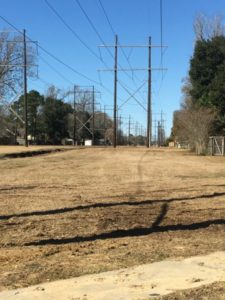Benefits of Wood Utility Poles

Our society has become much more environmentally sensitive and responsible in recent years. Recycling has increased, air and water standards are improved, smoking tobacco is generally prohibited inside most public buildings, etc. However, a phobia exists regarding wooden poles. There is nothing particularly aesthetically appealing about a creosote-treated pole that is leaching creosote out onto the adjacent sidewalk as I witnessed today. However, wooden poles are good for the environment and much better than the alternatives.
Wooden poles are visible along almost every city street and rural highway. They are essential components of our national infrastructure. They are impregnated with chemicals that must be toxic to stop degradation from insects and fungi. Yes, some of these preservatives will leach out into the adjacent soil. However, wood utility poles are much kinder to our planet than other materials. Independent, science-based life cycle assessments, or LCAs, confirm that preserved wood utility poles use less energy and resources, offset fossil fuel use and have a reduced environmental impact when compared to concrete, steel and fiber-reinforced composite utility poles.
Wood poles are made from a plentiful and renewable resource grown on managed timberlands. Growing trees produces oxygen and when converted into a product, wood stores carbon. Wood poles also help limit the accumulation of greenhouse gases. Due to the insulating properties of wood, eagles, ospreys and other large birds are able to perch on wood crossarms without danger of electrocution.
Dr. Kenneth Brooks dedicated much of his career to studying the environmental impacts of preservative-treated wood poles. Some of the key findings of his research are: (1) pressure treated wood utility poles pose no greater risk to the environment than growing the wheat used to bake your next loaf of bread, and present far less personal risk than driving to your local grocery store to purchase that bread. (2) there are environmental risks associated with everything we do and with all of the material used to construct utility structures. For instance, the leaching of zinc from steel utility poles has been documented. (3) Utility poles are not continually immersed in water and the actual lifetime losses are likely far lower — perhaps the equivalent of a penny of copper per year for each 20 poles. “
Meet the Author
Dr. Todd Shupe is the President of Wood Science Consulting, LLC. He is a well-recognized expert on wood forensics, wood preservation, wood decay and degradation, and wood species identification. He has a broad background in new product development, quality management, and marketing and sales in both the public and private sectors. For more information please visit DrToddShupe.com.
We welcome your comments below.
Thank you for visiting. We trust that you have enjoyed reading our articles.
Liked this post? Read more below or search for more topics . . .

